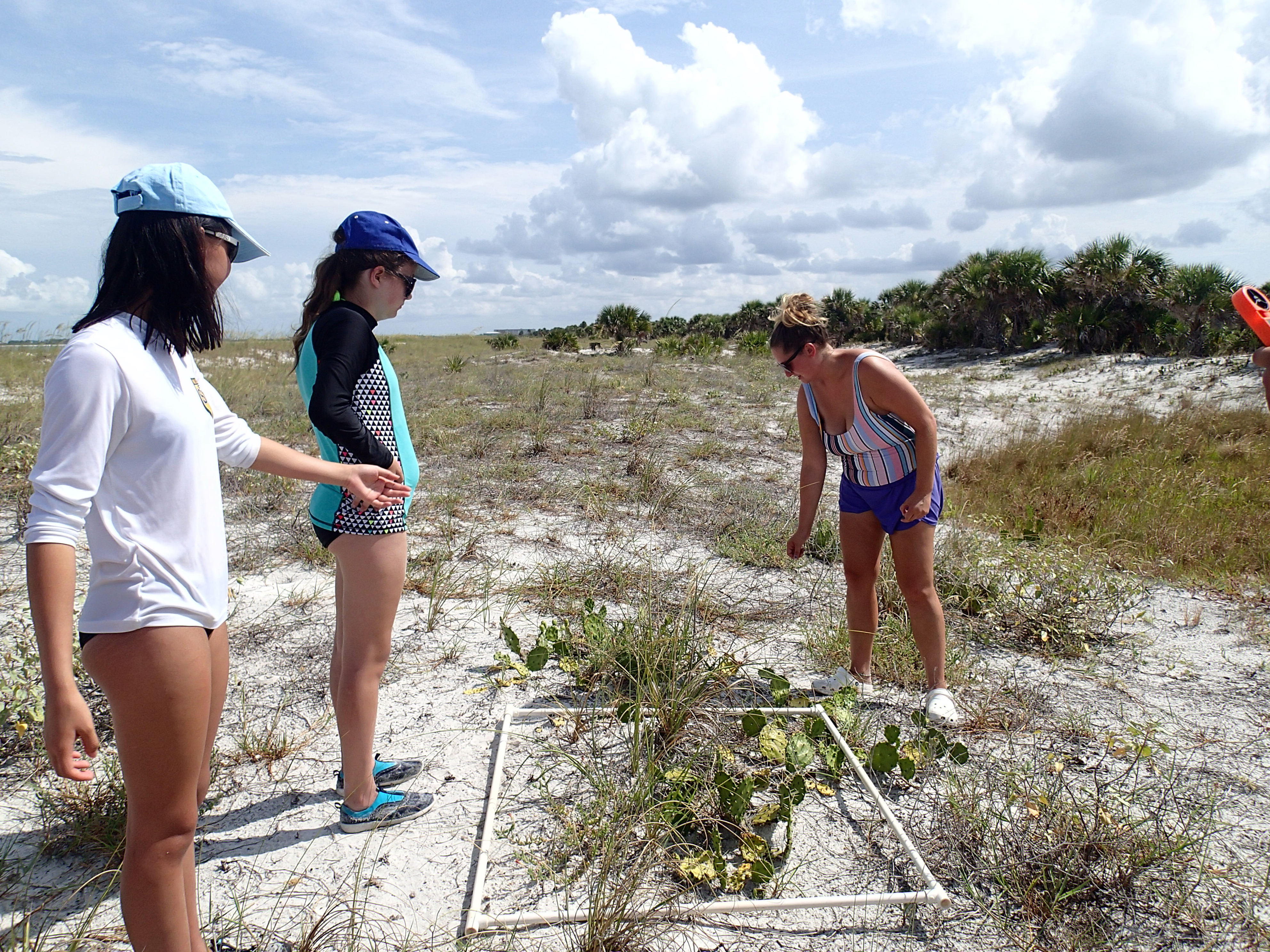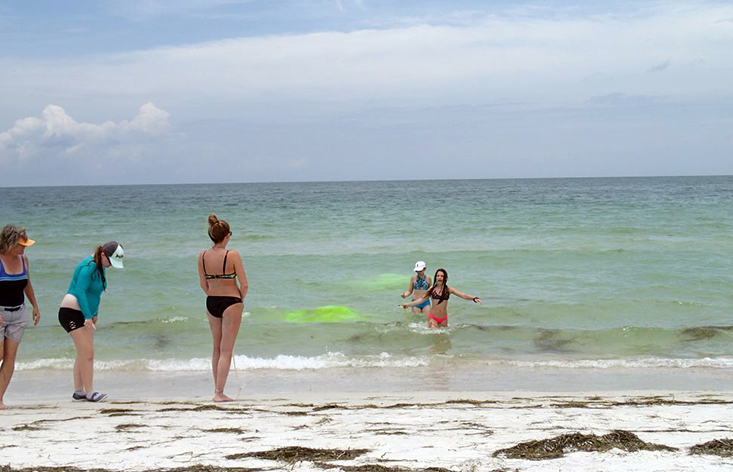This post was contributed by science mentor Carey Schafer.
Wednesday and Thursday of our second week of camp, the girls visited Caladesi Island, an undeveloped barrier island here in Pinellas County. The goal of the field trip was to explore and examine the processes that shape and change barrier islands. Aboard the short ferry ride from Honeymoon Island towards Caladesi, we saw dolphins, cormorants, and practiced some of our mangrove knowledge!
Upon our arrival with our coolers and science gear in tow, the campers were split into three different groups. The first group, led by Teresa, was dedicated to understanding the longshore current and its effect on sediment transport. To visualize the current’s movement parallel to the beach, the girls released a fluorescent dye into the water and calculated its speed of movement between points marked by meter sticks in the sand. In addition, they measured wave height and particle settling velocities to understand the amount of energy delivered by the waves and its impact on sediment deposition, or rather, the where and why behind different sand sizes falling out of the water onto the seafloor.
The second station, led by Paul and me, was all about sediment. With Paul, the campers gathered data to create a beach profile. Beach profiles are important for developers and for understanding how beaches change over time. In order to track elevation change from the sand dune to the water’s edge, the girls got to practice with a method that uses two pieces of equipment commonly employed by scientists when conducting profile surveys: the transit and stadia rod (featured in photos!).
Next, the girls explored the sediment beneath the surface layer of sand. Two pits were dug – one by the sand dune and another by the waters edge – and the differences in sedimentary structure were compared. The girls learned how to identify storm layers and discussed how sediment grain size is related to the energy in a system, proximity to the water’s edge, and major events, such as Hurricane Irma.

Discovering plant adaptations
After our first two rotations, we took a break for lunch which was rudely interrupted by a flock of seagulls, allowing the girls to observe first hand the gulls’ kleptoparasitism. During our post-eating swim call, we discovered a pregnant male seahorse, a panhead filefish, and a scrawled filefish!
Our third and final station, led by Kyle, focused on beach plant adaptations. Plants living on a barrier island play an important role in stabilizing the sediment which forms the sand dunes. These beach plants have adapted many ways to live in a harsh environment where they deal with high heat, salt spray, and strong winds. The campers explored the dunes and identified a variety of plant types along with their adaptations which help them to survive. Some adaptions included their root systems, leaves’ shapes, and even their sizes.
Overall, we had a great two days at Caladesi Island full of learning while playing around on the beach! A huge special shoutout to our counselors Bella and Savanna too who helped make it all happen!
